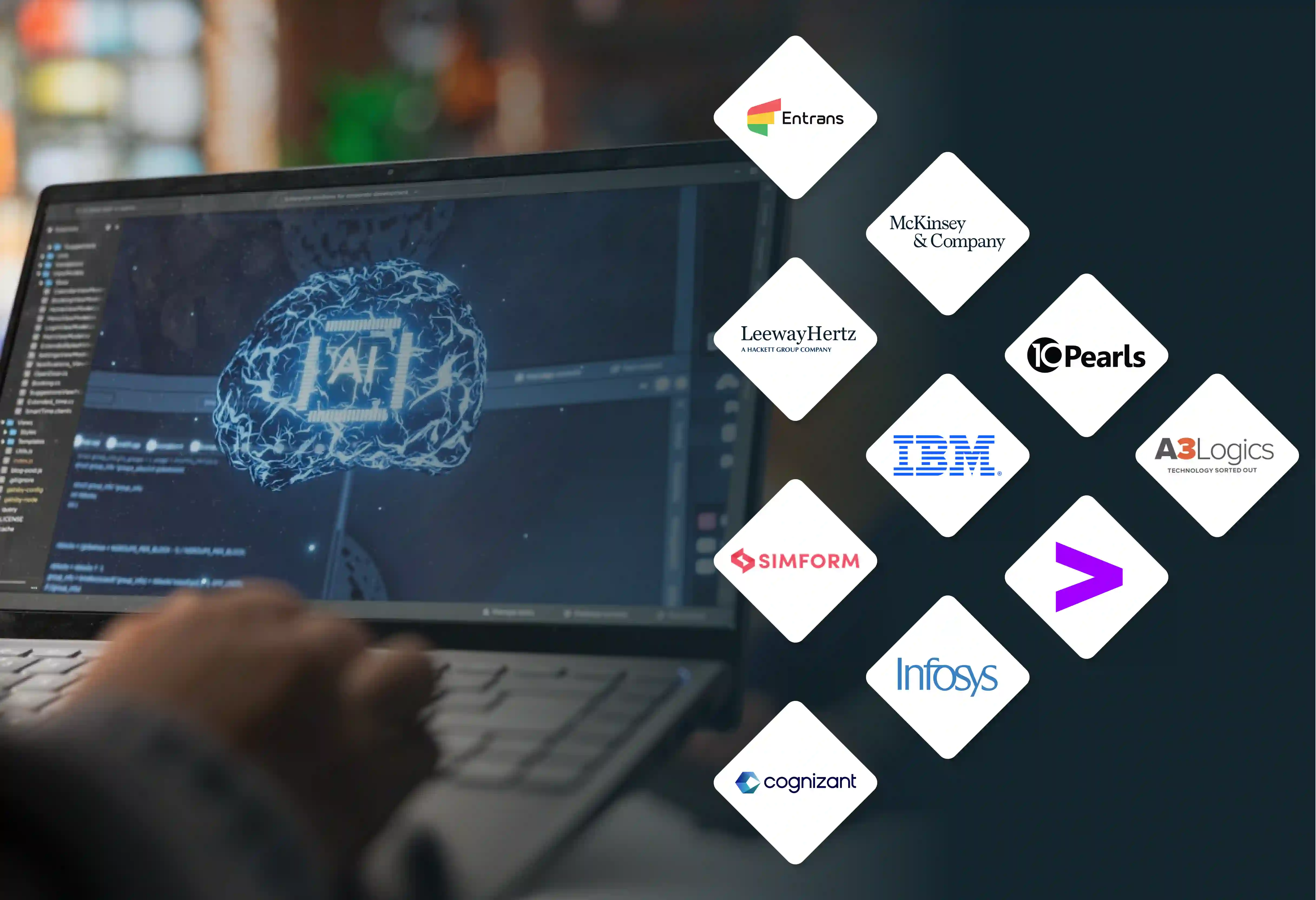


Generative AI is fundamentally changing how products are conceived, developed, and managed. Industry giants are driving this trend, and here’s what you need to know in order not to miss out!
Generative AI refers to systems that can create new content or solutions by learning from existing data. These AI models produce text, code, images, or even synthetic data based on user inputs or defined rules.
By mimicking human creativity, they enable faster problem-solving and innovation in software development and product management industries.
Generative AI makes it easier to gather and document requirements by analyzing past projects, customer data, and industry trends. It helps teams avoid missing key details and saves time by organizing insights into actionable points.
With AI, teams can anticipate user needs better, making product development more focused and user-friendly.
Generative AI provides detailed project timelines and cost estimates by studying historical data and resource patterns. It prevents surprises like unexpected delays or cost spikes, giving teams more control.
AI also helps decision-makers allocate resources effectively, ensuring smoother progress and predictable outcomes.
AI generates realistic test data that mimics real-world scenarios, allowing teams to test thoroughly without depending on actual samples. This speeds up testing, identifies potential issues earlier, and reduces risks.
Synthetic data also makes simulations more flexible and cost-efficient, empowering teams to experiment confidently.
Generative AI helps uncover weaknesses in prototypes and recommends solutions, leading to stronger and safer products.
It predicts potential problems before they escalate, saving time and resources. Teams can trust that AI-assisted testing creates more reliable results, reducing post-launch headaches.
Generative AI supports developers by writing, reviewing, and debugging code faster. This minimizes repetitive tasks and allows developers to focus on solving complex problems.
By identifying bugs early, AI ensures cleaner and more efficient code, improving overall product quality and user satisfaction.
Generative AI speeds up the creation of user manuals, FAQs, and technical guides, ensuring these resources are ready on time.
Allowing users to shape content to different audiences, making it easier for new and potential users to understand and engage with the product. Clear and timely documentation enhances the user experience, building loyalty and trust.
Generative AI speeds up every phase of product development, from planning to launch. It analyzes data quickly, automates repetitive tasks, and identifies potential roadblocks before they become delays.
This allows companies to respond faster to market changes, gaining a competitive edge and meeting customer needs more effectively. By minimizing bottlenecks, teams can focus on innovation and timely delivery
Generative AI takes over time-consuming activities like data entry, documentation, and standard reporting. This allows team members to dedicate their energy to more strategic and creative work.
Automating mundane tasks reduces errors and improves accuracy, while also helping to prevent burnout among employees. With AI handling the groundwork, teams can operate at a higher level of efficiency.
By streamlining processes and reducing manual workload, AI helps companies save money. It optimizes the use of resources such as time, labor, and materials, allowing businesses to achieve better results with less effort.
The cost savings can be reinvested into innovation, new tools, or enhancing the user experience, creating a virtuous cycle of improvement without sacrificing quality.
With generative AI, product designers can test and refine ideas more rapidly. AI models generate multiple variations of a design, providing valuable options to evaluate. This leads to faster alignment with user needs and market trends.
Quick iterations mean products are fine-tuned to perfection before they even hit the market, resulting in higher customer satisfaction.
Generative AI uses patterns in data to forecast trends, risks, and opportunities. This empowers teams to make proactive, well-informed decisions throughout the product lifecycle.
By combining AI insights with human expertise, businesses can optimize strategies, reduce uncertainty, and drive better outcomes. Predictive analytics ensures resources are allocated efficiently and goals are met effectively.
AI relies on high-quality, up-to-date data. Without this, its predictions and suggestions can miss the mark. For designers and companies, this could mean products that don't meet user needs, leading to frustration and a poor user experience.
What can you do? Regularly refresh datasets to reflect current trends, gather insights from diverse sources to avoid bias, and always compare AI outputs to established benchmarks. This ensures your tools stay relevant and trustworthy.
AI systems require skilled hands. If your team doesn't have the expertise, it could slow down progress or lead to expensive mistakes in the long-run. This impacts the GTM timeline and stakeholders who rely on smooth workflows and companies aiming to stay competitive.
To deal with this, you’ll likely need to create training opportunities for your current team, bring in external specialists to fill gaps, and choose AI tools designed with simplicity in mind so anyone can use them effectively.
Bringing AI into your processes can shake things up. Employees might feel overwhelmed, and workflows could slow down. For product stakeholders, this means delays in testing and iterating ideas, and for companies, it means a longer go-to-market timeline.
How to manage: Break the process into small steps. Let everyone know how AI will improve their work, and provide hands-on training to ease the transition. This keeps teams confident and workflows steady.
Generative AI has the potential to revolutionize product lifecycle management, but compatibility issues with legacy systems remain a significant challenge. Legacy systems often lack the necessary flexibility and architecture to support advanced AI models, hindering their ability to fully leverage AI-driven insights. T
his leads to inefficiencies, as AI tools may struggle to operate with older data formats or incompatible software components.
Since generative AI can be applied across the product lifecycle, managing legal and ethical challenges can be difficult due to varying laws and guidelines. With the right AI framework, you can standardize decision-making processes and ensure consistency across all stages.
But to deal with this, you'll need to:
Since generative AI can be applied across the product lifecycle, handling privacy concerns and the risk of shadow IT can be difficult due to varying data protection regulations. With a solid AI framework, you can centralize data access and control.
More importantly, you can also reduce the risk of shadow IT by implementing clear data governance policies across all product stages. Also encrypting data and setting company-wide policies can keep this aspect in check.
Generative AI is reshaping software development by creating reusable, adaptable code across languages and frameworks. Developers can expedite workflows using AI-generated snippets, reducing repetitive tasks while maintaining precision.
Generative AI will further simplify coding, making software development more accessible to non-experts.
Additionally, AI-driven tools simplify complex coding challenges by enabling automated debugging and context-aware recommendations, improving developer efficiency.
By processing specialized data, generative models create more relevant outputs, from design to decision-making.
This evolution allows professionals to access smarter tools that adapt to their field's nuances, improving productivity and delivering deeper insights without requiring significant manual oversight.
As generative AI continues to evolve, it will change and is already changing customer segmentation by analyzing large datasets from various sources.
This enables the identification of patterns and trends that human analysts might miss. By using AI to process diverse data points, marketing strategies become more targeted, helping businesses reach specific customer segments with greater precision.
But in doing this, users need to keep in mind compliance practices like:
As generative AI continues to evolve, it will rely more on diverse data from multiple sources to improve decision-making and innovation within tech industries. With access to real-time data, machine learning models can produce more accurate insights and predictions.
Access to diverse datasets will improve AI accuracy and relevance, ensuring better decision-making and innovation.
Entrans speeds up your GTM with efficient workflows, and lower costs accelerating your time-to-market.
Simplify how generative AI across the product lifecycle, offering solutions that enhance design processes, streamline production, and optimize end-to-end workflows. Our expertise ensures seamless collaboration across teams while addressing regulatory and ethical challenges.
Want to transform your product lifecycle with generative AI? Reach out for a free consultation!





